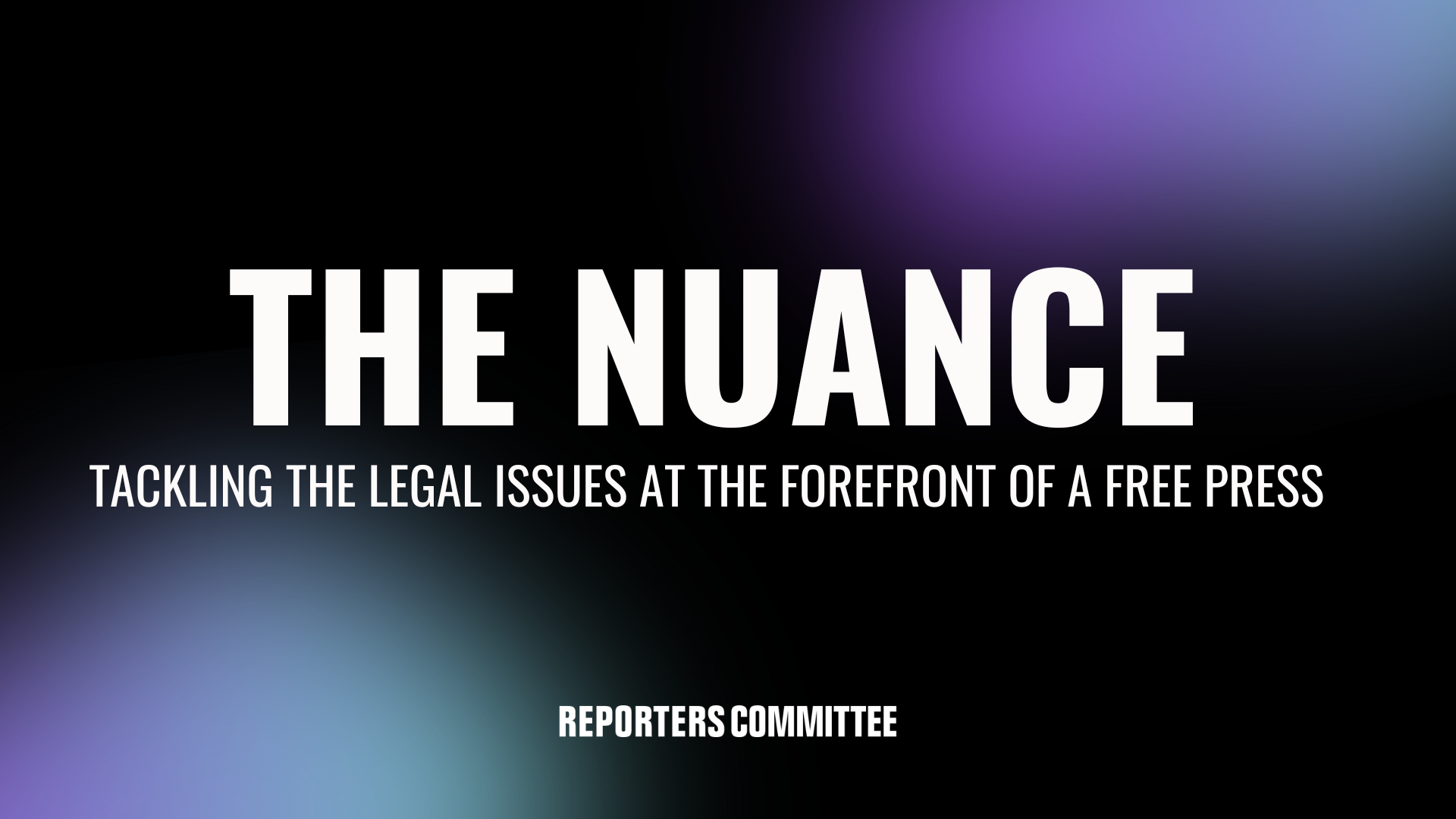NRA case reaffirms crucial principle for free press

If you like this post, sign up to get The Nuance newsletter delivered straight to your inbox every Sunday night!
As we previewed several weeks ago, the U.S. Supreme Court recently delivered a unanimous victory to the National Rifle Association in its First Amendment case against Maria T. Vullo, former superintendent of the New York State Department of Financial Services, in which the NRA accused the agency of coercing regulated insurance providers into not doing business with the NRA in retaliation for the organization’s views.
In its opinion, the Court reaffirmed its seminal ruling in Bantam Books v. Sullivan. In that 1963 decision, the Court held that a state commission without formal enforcement authority nonetheless violated the First Amendment when it notified bookstores that they were selling what the commission determined to be obscene publications and that, if the stores didn’t pull them from shelves, the commission would be forced to report it to the authorities.
Bantam Books is a crucial precedent for the press, in that it provides news organizations a theory of protection from often subtle pressure from government officials to influence coverage. An example could be threatening to refer a criminal case to the Justice Department if journalists publish government secrets.
In Vullo, the Supreme Court said that Bantam Books “stands for the principle that a government official cannot do indirectly what she is barred from doing directly: A government official cannot coerce a private party to punish or suppress disfavored speech on her behalf.” Applying that principle to the case before it, the Court allowed the NRA’s case against Vullo and the DFS to go forward. The Supreme Court determined that the NRA had adequately alleged a violation of its First Amendment rights in its initial court filing. (This decision comes after a ruling by the U.S. Court of Appeals for the Second Circuit dismissing the NRA’s case, which the Supreme Court reversed.)
It remains to be seen whether New York officials in fact violated the First Amendment rights of the NRA. At this stage, the Court only determined that the NRA adequately alleged such a violation and may now proceed to fact-finding.
Notably, the American Civil Liberties Union represented the NRA in the case. Despite “stand[ing] in stark opposition to the NRA on many issues,” the ACLU said in a press release about the win that it believed strongly in the NRA’s First Amendment rights, which the ACLU said were violated by the New York official’s attempt to “blacklist” the organization “because of its viewpoint.”
As we have talked about in this newsletter before, Vullo raised similar legal issues to another case that is still pending this term, Murthy v. Missouri. In that case, Missouri and Louisiana, in addition to several individual social media users, sued a group of federal government officials accusing them of coercing social media platforms to take down their posts as a part of the government’s outreach regarding content related to COVID-19, election fraud, and other issues — a practice sometimes known as “jawboning.” The Reporters Committee filed a friend-of-the-court brief in that case in support of neither party arguing that the Supreme Court should be careful when drawing the line between coercion and persuasion in order to avoid too broad a standard that might chill important First Amendment activity.
Although the NRA decision reaffirmed the principle that the Supreme Court already articulated in Bantam Books, lower courts continue to struggle to apply that case’s principles. So, the NRA decision’s clear and unequivocal statement, by a unanimous court no less, that government officials may not use their official authority to coerce another party to punish or silence a disfavored figure is kind of a big deal. Bottom line: At least on facts like those alleged by the NRA here, the central insight of Bantam Books — that indirect coercion of speech by the government can be as constitutionally troubling as direct censorship — remains quite vital today.
The Technology and Press Freedom Project at the Reporters Committee for Freedom of the Press uses integrated advocacy — combining the law, policy analysis, and public education — to defend and promote press rights on issues at the intersection of technology and press freedom, such as reporter-source confidentiality protections, electronic surveillance law and policy, and content regulation online and in other media. TPFP is directed by Reporters Committee attorney Gabe Rottman. He works with RCFP Staff Attorney Grayson Clary and Technology and Press Freedom Project Fellow Emily Hockett.